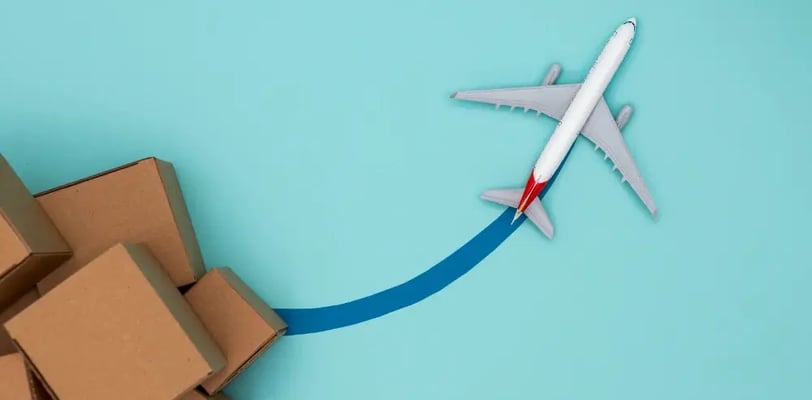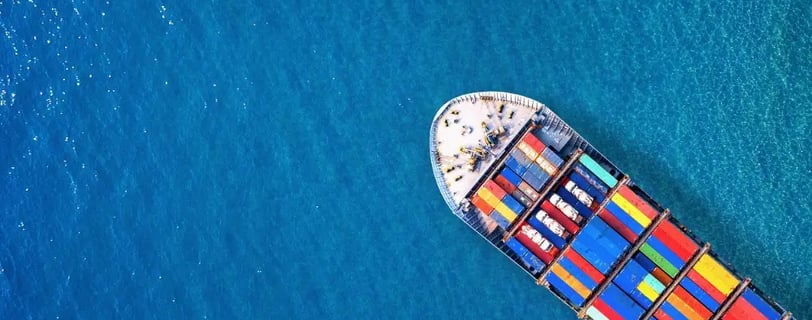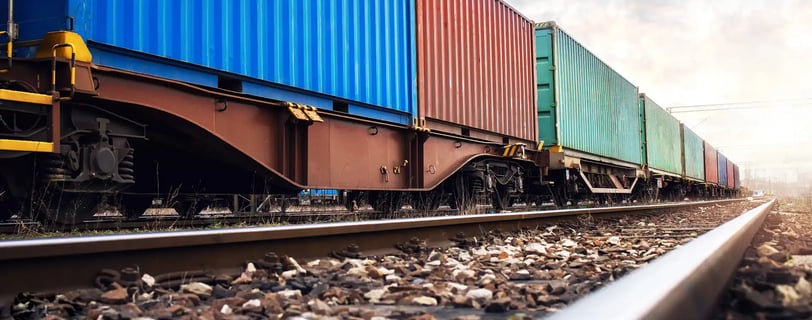[Shipping Guide] Exploring Air, Sea, and Rail Shipping Options from China
Shipping from China options: Explore air, sea, and rail freight for cost-effective, timely delivery to Africa and the Middle East. Optimize your logistics strategy.
12/21/20246 min read
![[Shipping Guide] Exploring Air, Sea, and Rail Shipping Options from China](https://assets.zyrosite.com/cdn-cgi/image/format=auto,w=812,h=400,fit=crop,trim=40.62476894639556;0;134.18484288354898;0/YNqro9jB1VIg6bzd/1374-AzG3ROJZRLuDyMRe.webp)
![[Shipping Guide] Exploring Air, Sea, and Rail Shipping Options from China](https://assets.zyrosite.com/cdn-cgi/image/format=auto,w=328,h=320,fit=crop,trim=0;0;0;316.66666666666663/YNqro9jB1VIg6bzd/1374-AzG3ROJZRLuDyMRe.webp)
Importing goods from China has become a cornerstone of global trade, offering opportunities for businesses to scale by accessing high-quality products at competitive prices. However, navigating shipping options can be overwhelming. With air freight, sea freight, and rail transport all on the table, choosing the right method depends on various factors like cost, speed, and the nature of your goods. This guide will help you explore the available shipping methods and make an informed decision for your business needs.
Table of Contents
Introduction to Shipping Options from China
Understanding Air Freight
When to Use Air Freight
Costs and Transit Times
Exploring Sea Freight
Ideal Scenarios for Sea Freight
Cost Breakdown and Typical Transit Times
Delving into Rail Transport
Benefits of Rail Transport
Key Costs and Timeframes
Choosing the Right Shipping Method
Comparing Cost, Speed, and Volume
Freight Forwarders: Your Logistics Partner
Overcoming Common Shipping Challenges
Ensuring Proper Packaging for Safe Transit
FAQs and Additional Resources
Conclusion: Making the Best Shipping Decisions
Introduction to Shipping Options from China
China’s position as a global manufacturing powerhouse makes it a prime sourcing destination. However, shipping products from China to destinations like Africa or the Middle East requires careful planning to balance cost efficiency and timely delivery. Whether you’re importing electronics, clothing, or heavy machinery, understanding your shipping options is crucial.
Every shipping method—air, sea, or rail—offers unique advantages, and the right choice depends on your priorities. For example, air freight is ideal for fast, lightweight shipments, while sea freight suits large, bulky goods. Rail transport, increasingly popular for regions like Europe and parts of the Middle East, provides a middle ground in terms of cost and transit time.


Understanding Air Freight
When to Use Air Freight
Air freight is the fastest shipping method and is particularly useful for businesses with urgent timelines. For example, African e-commerce companies often rely on air freight to restock fast-selling items like electronics. However, this speed comes at a premium, making it more suitable for smaller, high-value shipments.
Examples for goods shipped by air freight include:
Fashion items for seasonal sales.
High-demand consumer electronics.
Perishable goods like cosmetics or food supplements.
Costs and Transit Times
Air freight is generally more expensive than other methods. Costs are influenced by:
Weight and volume: Airlines use volumetric weight calculations, so lightweight but bulky items can still incur high fees.
Destination: Shipping to remote or landlocked areas, such as parts of Africa, may add to the cost.
On average, air freight from China to Africa or the Middle East takes 3–10 days. For high-priority shipments, express options may reduce transit times to as little as 2 days.
Example: A shipment of 500 kg electronics from Shenzhen to Lagos via air freight may cost approximately $4,000–$6,000, depending on the airline and demand.


Exploring Sea Freight
Ideal Scenarios for Sea Freight
Sea freight remains the most widely used shipping method for businesses importing goods from China, especially for large shipments. It is highly cost-efficient and accommodates a vast range of products, from industrial machinery to consumer goods. For African and Middle Eastern businesses, sea freight is often the go-to option for bulk orders due to its affordability.
For example, a construction company in Kenya sourcing materials like tiles or machinery from Guangzhou would likely benefit from sea freight’s cost savings. Similarly, a distributor in Saudi Arabia importing furniture for retail would find sea freight ideal for handling heavy and voluminous goods.
Cost Breakdown and Typical Transit Times
Sea freight is priced based on the type of container and shipment volume:
Full Container Load (FCL): Ideal for large shipments, offering the exclusive use of a container. Common sizes are 20-foot and 40-foot containers.
Less than Container Load (LCL): Cost-effective for smaller shipments, sharing container space with other businesses.
For reference, shipping a 20-foot container from Shanghai to Mombasa may cost around $2,000–$3,500, while a similar container to Jeddah might be slightly higher due to additional fees like port charges.
Transit times for sea freight can range from 20–50 days, depending on the destination:
China to East Africa: Approximately 25–35 days.
China to the Middle East: Around 20–30 days for major ports like Jebel Ali in Dubai.
While sea freight is slower than air, its reduced shipping cost makes it invaluable for non-urgent shipments.


Delving into Rail Transport
Benefits of Rail Transport
Rail transport is a growing option for shipping goods from China, particularly for regions connected through the Belt and Road Initiative. Though not yet as widely utilized for Africa, rail transport is increasingly popular for Middle Eastern and European destinations, offering a middle ground between cost and speed.
Key benefits include:
Speed: Faster than sea freight, with transit times ranging from 10–25 days for destinations like Turkey or the UAE.
Cost-Effectiveness: Less expensive than air freight, especially for medium-sized shipments.
Eco-Friendly Option: Rail transport has a lower carbon footprint, making it an appealing choice for businesses prioritizing sustainability.
Key Costs and Timeframes
Rail freight costs vary based on:
Shipment size and weight.
Distance to the destination.
Customs clearance requirements along the route.
For example, shipping goods from Yiwu to Istanbul via rail might cost approximately $2,000–$3,000 for a 1-ton shipment, with transit times of around 15–20 days.
Case Study: A textile exporter in Ethiopia sourcing fabrics from China could consider rail freight for shipments passing through key Middle Eastern trade hubs, ensuring faster delivery than sea freight at a reasonable cost.
Choosing the Right Shipping Method
Selecting the most suitable shipping method depends on three key factors:
Comparing Cost, Speed, and Volume
Cost:
Sea freight is the most economical for large shipments.
Rail freight offers medium pricing for faster delivery compared to sea.
Air freight is the most expensive but ideal for urgent or lightweight shipments.
Speed:
Air freight: 3–10 days.
Rail freight: 10–25 days.
Sea freight: 20–50 days.
Volume:
Bulk shipments are best handled via sea freight.
Medium-sized shipments might favor rail.
Small, high-value shipments are ideal for air freight.
Matching Shipping Methods to Business Needs
Example 1: A South African fashion retailer needing fast delivery of seasonal stock would likely opt for air freight to minimize delays.
Example 2: A Middle Eastern wholesaler importing machinery in bulk would benefit from the cost savings of sea freight.
Example 3: A company importing consumer electronics to the UAE might find rail transport an efficient solution, balancing cost and speed.
Freight Forwarders: Your Logistics Partner
Why Work with a Freight Forwarder?
Freight forwarders play a crucial role in simplifying the complexities of international shipping. They act as intermediaries, managing logistics, customs clearance, and documentation, ensuring that your shipment reaches its destination efficiently.
For businesses in Africa and the Middle East, where trade routes may involve multiple touchpoints, a reliable freight forwarder is indispensable. Their expertise in navigating challenges like regulatory differences, port procedures, and transit delays can save you time and money.
How to Choose a Reliable Freight Forwarder
When selecting a freight forwarder, consider the following:
Experience in Your Target Markets: Ensure the forwarder has experience handling shipments to Africa or the Middle East.
Comprehensive Services: Look for providers that manage customs clearance, tracking, and warehousing.
Strong Network: Freight forwarders with established connections to ports, railways, and airlines can offer better rates and reliability.
Tip: Companies like Smart Win offer end-to-end support for sourcing products and shipping from China.
Overcoming Common Shipping Challenges
Delays in Shipping and Customs Clearance
Delays can occur due to port congestion, incomplete documentation, or customs inspections. Minimize risks by:
Ensuring accurate and complete paperwork.
Working with freight forwarders to preempt potential issues.
Handling Damaged Goods or Losses
Shipping involves risks, including goods being damaged or lost in transit. Protect your shipments by:
Investing in insurance to cover potential losses.
Using high-quality packaging materials to safeguard items, especially for sea freight where containers endure rough handling.
Navigating Regulatory Changes
Import regulations differ by country and can change frequently. Stay updated by consulting reliable resources, such as government trade websites.
Ensuring Proper Packaging for Safe Transit
Proper packaging is critical to protecting your goods during transport.
Packaging for Air Freight
Use lightweight materials to reduce shipping costs.
Reinforce boxes with padding to withstand pressure in cargo holds.
Packaging for Sea Freight
Ensure goods are waterproofed to avoid damage from humidity or leaks.
Secure items within the container to prevent movement during rough seas.
Packaging for Rail Transport
Use shock-absorbent materials, as rail transport can involve vibrations.
Label packages clearly to comply with customs and logistics requirements.
FAQs and Additional Resources
FAQs
Q: Can I combine shipping methods for one shipment?
Yes, combining methods (e.g., sea and rail) can optimize costs and delivery times. This is particularly useful for reaching landlocked areas in Africa.
Q: Are there shipping restrictions for certain products?
Some items, like hazardous materials, liquid, and battery require special permits. Check with your freight forwarder to understand specific regulations.
Additional Resources
Conclusion: Making the Best Shipping Decisions
Choosing the right shipping method from China depends on your priorities, whether cost, speed, or shipment size. Understanding the nuances of air freight, sea freight, and rail transport will help you streamline your logistics strategy.
For businesses in Africa and the Middle East, leveraging the expertise of trusted partners like Smart Win can simplify the process of importing from China, and ensuring your goods arrive on time and in perfect condition.
Start optimizing your shipping strategies today by exploring your options with experienced freight forwarders who can handle everything from customs clearance to final delivery.
Get in touch
Our Address
No.202 Huanshi West Rd, Yuexiu District Guangzhou, China
Contact Us
Working hours
Monday - Saturday
9:00 - 18:00
( Beijing Standard Time )
Smart Win Services


Company




